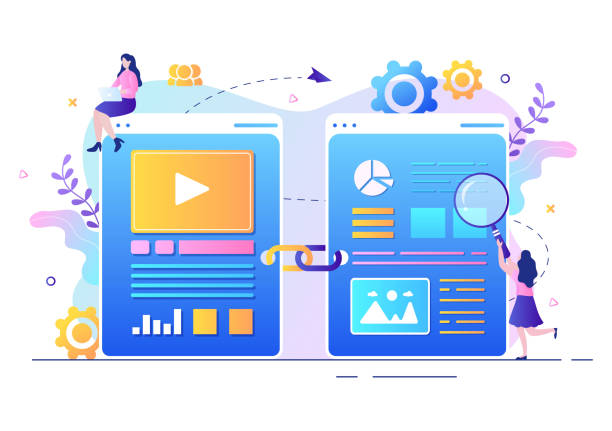The Importance of Fast Website Design in Today’s World
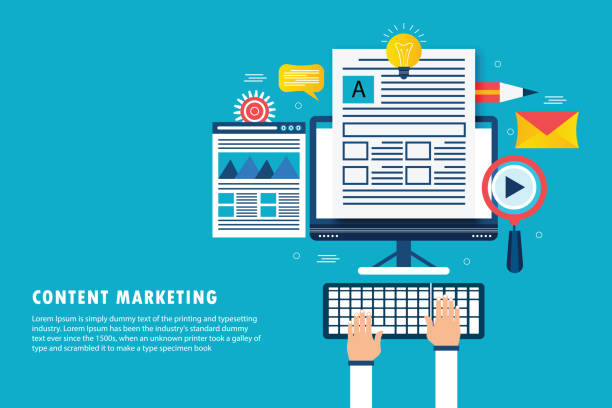
In the current digital age, where competition is fierce for #user_attention, having a website with #high_speed is no longer an advantage, but a necessity.
Fast website design plays a vital role in retaining users and converting visitors into customers.
Statistics show that if a website takes more than 3 seconds to load, more than half of users will leave it.
This clearly indicates that speed directly impacts user experience (UX) and can significantly affect website sales and engagement.
This is important news for any business that wants to have an effective online presence.
The explanatory discussion here is why even milliseconds matter in loading speed: every small delay can lead to an increase in Bounce Rate and a decrease in user dwell time.
In other words, fast website design is a key factor for online success.
Ignoring this issue can lead to the loss of countless opportunities in today’s competitive market.
This importance is such that search engines like Google also consider site speed as an important ranking factor.
Are your online sales not as expected? With Rasaweb, solve the problem of low sales and poor user experience forever!
✅ Increase visitor-to-customer conversion rate
✅ Create an enjoyable user experience and increase customer trust
⚡ Act now to receive a free consultation!
The Impact of Site Speed on User Experience and SEO

Site loading speed is the backbone of an exceptional user experience and search engine optimization (SEO).
Today’s users are more impatient than ever and expect web pages to load almost instantly.
Websites that have successfully implemented fast website design not only keep users satisfied but also have a greater chance of converting visitors into customers.
This is an important analytical point in the web domain.
From an SEO perspective, Google and other search engines consider speed as a ranking signal.
Slower websites may appear lower in search results, even if they have excellent content.
This means that fast website design directly affects your website’s visibility on the internet.
High speed helps search engines crawl your pages faster and more efficiently, leading to better indexing and ultimately higher rankings.
Furthermore, site speed indirectly impacts SEO factors such as bounce rate and dwell time; the faster your site is, the longer users stay and the less they bounce, which are positive signals for search engines.
Ultimately, investing in site speed optimization is an investment in your business’s digital future.
Technical Factors Affecting Website Design Speed

To achieve fast website design, understanding key technical factors is essential.
These factors include hosting, code optimization (HTML, CSS, JavaScript), image compression and optimization, and the use of caching and content delivery networks (CDN).
Choosing appropriate hosting is one of the first and most important steps; a powerful and high-speed host can significantly reduce server response time.
Code optimization means minifying files and combining them to reduce the number of HTTP requests.
Images are often the heaviest elements of a web page; lossless compression and the use of modern image formats like WebP can speed up loading.
Using caching systems allows browsers to store static content so that it doesn’t need to be reloaded on subsequent visits.
Also, CDNs store your website’s content on servers close to users and thereby drastically reduce loading times for users in different geographical locations.
This is a specialized part of fast website design that requires technical knowledge.
Below is a table comparing hosting types:
| Hosting Type | Advantages | Disadvantages | Suitable for |
|---|---|---|---|
| Shared Hosting | Low-cost, easy setup | Variable performance, limited resources, potential speed drop | Small and beginner websites |
| Virtual Private Server (VPS) | Dedicated resources, high flexibility, more affordable than dedicated | Requires more technical knowledge, more complex management | Medium businesses, websites with growing traffic |
| Dedicated Hosting | Maximum performance, full control, high security | Very costly, requires high expertise | Large, high-traffic websites and large organizations |
| Cloud Hosting | High scalability, pay-as-you-go, high stability | Variable costs, complexity in initial configuration | Projects with irregular traffic, startups, dynamic websites |
Tools and Techniques for Website Speed Optimization

To ensure fast website design, various tools and techniques are available that every developer and website owner should be familiar with.
One of the most widely used tools is Google PageSpeed Insights, which provides a site speed score for desktop and mobile versions and offers suggestions for performance improvement.
GTmetrix and WebPageTest are similar tools that provide more detailed information on loading time, number of requests, and page size.
Technically, using “Lazy Loading” for images and videos is very effective; this technique ensures visual content is only loaded when the user scrolls to that section of the page, which helps reduce initial loading time.
“Minification” of CSS and JavaScript files means removing white spaces, comments, and unnecessary characters, which reduces file size.
Gzip compression for text files can also significantly reduce consumed bandwidth.
Database Optimization, especially for CMS-based websites like WordPress, improves site speed by removing redundant data and optimizing tables.
These are practical guidelines for increasing your website’s speed and play a significant role in fast website design.
Applying these techniques can make a dramatic difference in performance and user experience.
Does your current corporate website not reflect your brand’s credibility and power as it should? Rasaweb solves this challenge for you with professional corporate website design.
✅ Increase credibility and visitor trust
✅ Targeted attraction of more customers
⚡ Click to receive a free consultation!
The Role of Responsiveness in Fast Mobile Website Design
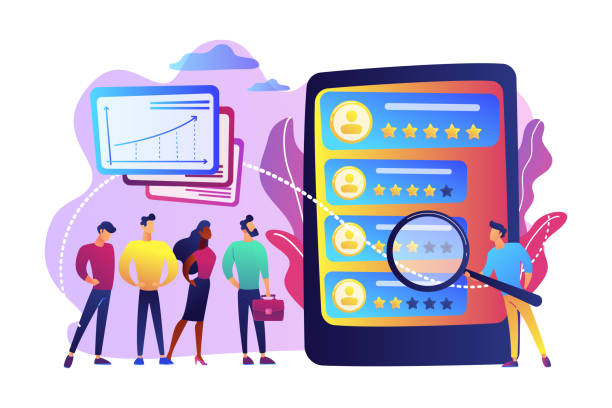
In today’s world, where a significant portion of internet traffic comes from mobile devices, website responsiveness is not just a feature, but a requirement.
Fast website design for mobile means providing an optimal user experience and high loading speed on any screen size and device.
For years, Google has adopted a “Mobile-First Indexing” approach, meaning it considers your site’s mobile version as the primary one for evaluation and ranking.
Therefore, if your site is slow or unsuitable on mobile, your SEO ranking will be severely affected.
A responsive site automatically adjusts its layout and content to the user’s screen size, but achieving high speed on mobile requires specific optimizations.
This includes compressing images for mobile devices, using simpler layouts on mobile, and minimizing JavaScript and CSS codes that might slow down loading.
Technologies like AMP (Accelerated Mobile Pages) have also been developed with the aim of delivering incredibly fast web pages on mobile and can be used as a supplementary strategy.
This is an important educational section for anyone looking to improve their website’s performance on mobile devices.
Ensuring speed and responsiveness in fast website design for mobile is a crucial step towards attracting and retaining audiences.
Choosing the Right Platform and CMS for High Speed
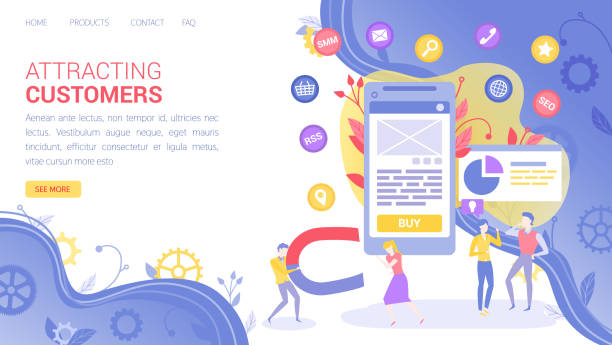
Choosing the right platform and Content Management System (CMS) has a significant impact on achieving fast website design.
Each CMS has its own strengths and weaknesses in terms of performance.
For example, WordPress is very popular due to its flexibility and numerous plugins, but if not properly optimized (with heavy themes or too many plugins), it can become slow.
On the other hand, platforms like Gatsby or Next.js, which are built on React and the concept of “Static Site Generation,” are inherently faster because they generate pages at build time, minimizing the need for server-side processing during a visit.
Joomla and Drupal are also powerful options, but optimizing their speed also requires technical knowledge.
For the most specialized choice, project needs, content volume, expected traffic, and the development team’s capabilities must be considered.
For instance, for a simple blog, WordPress with caching optimization plugins can perform very well, while a large e-commerce website might require more advanced solutions.
The decision regarding the platform should be made with a long-term perspective on the site’s performance and scalability.
Common Website Design Mistakes and Ways to Fix Slowness
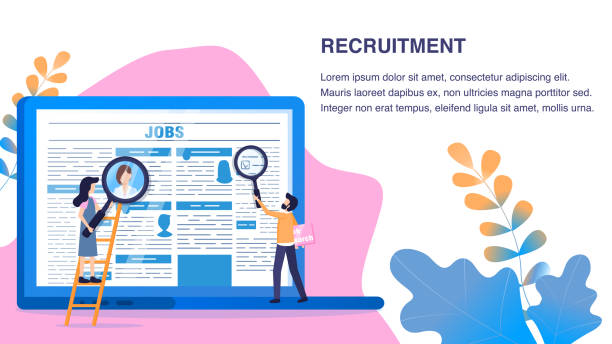
One of the intriguing questions in web design is why, despite efforts, some websites are still slow. The answer often lies in common mistakes in the fast website design process.
One of the biggest mistakes is using high-volume images without optimization.
Every image added to the site should be compressed and saved in the appropriate size before uploading.
Another is overloading with unnecessary plugins or JavaScript scripts that can consume server resources and increase loading time.
Many website themes and templates are also designed without speed optimization and contain heavy code and bloatware.
Not using caching is also a common error; without caching, every time a user visits a page, the server must process and send all content from scratch.
Additionally, choosing unsuitable hosting or shared hosting with limited resources can become a speed bottleneck.
To fix these issues, it is necessary to regularly audit your site for performance, use lightweight and optimized plugins and themes, compress images, and utilize caching and CDNs.
The database should also be periodically optimized and cleaned.
By identifying and correcting these mistakes, you can significantly improve your site loading speed.
| Common Mistake | Explanation | Optimization Solution |
|---|---|---|
| Unoptimized Images | High-volume images and inappropriate dimensions | Compression, resizing, using WebP formats, Lazy Loading |
| Heavy CSS/JS Codes | Bulky and unnecessary CSS and JS files | Minification, combining files, Defer/Async Loading |
| Lack of Caching | Full page reload for every visit | Implementing server-side and browser caching, using caching plugins |
| Inappropriate Host Choice | Shared hosting with insufficient resources or slow servers | Choosing quality VPS, dedicated server, or cloud hosting |
| Too Many/Unoptimized Plugins | Using too many plugins or poorly coded plugins | Removing unnecessary plugins, using optimized plugins |
Monitoring and Maintaining Site Speed
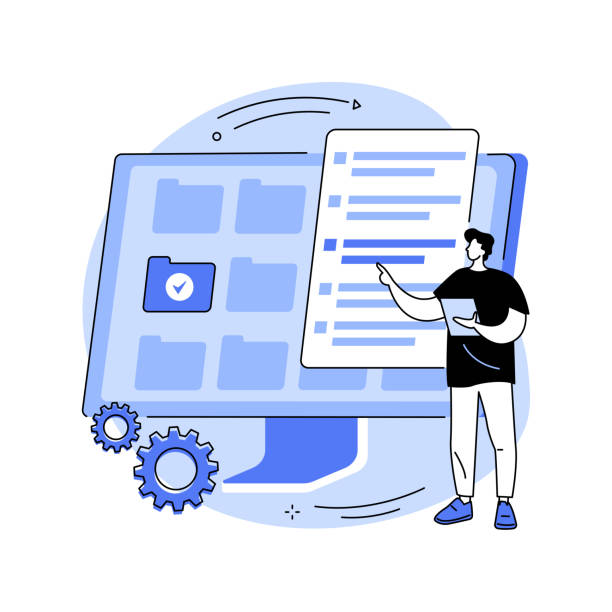
After achieving a fast website design, the work is not over; continuous monitoring and maintenance of site speed are essential to preserve optimal performance.
Websites are living entities that constantly face new content, software updates, and changes in traffic and user behavior.
Therefore, a key guideline is to have a regular plan for checking your site’s speed performance.
Tools like Google Search Console (Core Web Vitals section) and Google Analytics can provide valuable information about page loading speed and user behavior.
Using third-party monitoring tools such as UptimeRobot or Pingdom can also help you quickly identify any speed drops or site outages.
Setting a “Performance Budget” for your website can be very beneficial; this means setting limits for page size, number of requests, and loading time that developers must adhere to.
Regular updates of CMS, themes, and plugins, checking for broken links, periodic database optimization, and monitoring hosting resource consumption are all part of active maintenance.
This continuous process ensures that your website always remains at its peak performance and provides the best experience to users.
Did you know that customers’ first impression of your company is your website? With a powerful corporate website from Rasaweb, multiply your business’s credibility!
✅ Custom and eye-catching design tailored to your brand
✅ Improved user experience and increased customer acquisition
⚡ Get a free consultation!
Successful and Inspiring Examples of Fast Website Design
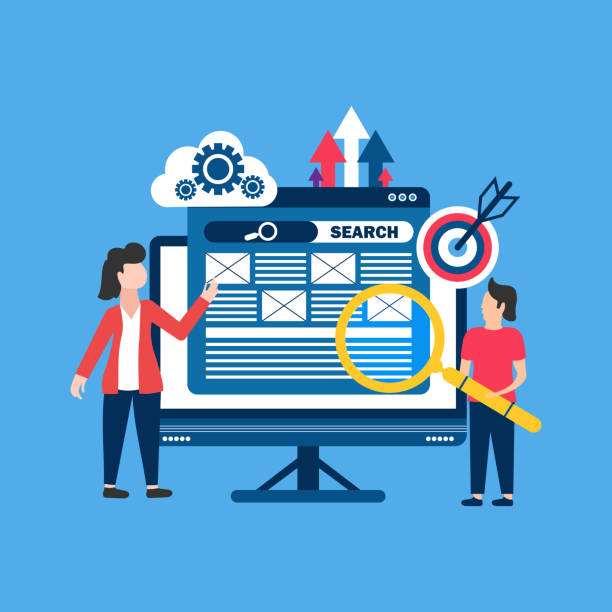
Observing successful examples of fast website design can be very entertaining and inspiring, demonstrating that achieving high speed alongside beauty and functionality is entirely possible.
Many tech giants and high-traffic websites, such as Google, Amazon, and Facebook, continuously invest in optimizing their page speeds.
Websites like Google Search are known for their incredibly fast loading and seamless user experience across all devices.
Other examples include news websites like New York Times or BBC News, which, despite a high volume of content and images, strive to deliver their pages to users in a fraction of a second.
These sites use techniques such as advanced compression, extensive CDNs, intelligent caching, and high-level code optimization.
In the e-commerce sector, websites like Amazon constantly improve the loading speed of their products and pages, as they know that every millisecond of delay can mean losing millions of dollars in sales.
The secret to these websites’ success is not just optimal coding, but a comprehensive approach to performance that includes choosing suitable hosting, using scalable architectures, and continuous monitoring.
Examining these examples shows that fast website design is an achievable goal that brings significant competitive advantages.
Future Trends in Fast Website Design and the Future of the Web

The future of fast website design is full of exciting advancements that will allow websites to be faster and more efficient than ever before.
One important news trend is the emergence and expansion of HTTP/3, built on the QUIC protocol, which promises reduced latency and increased data transfer speeds, especially in noisy and mobile networks.
Furthermore, the increasing use of Artificial Intelligence (AI) and Machine Learning for website performance optimization is on the rise; these technologies can analyze traffic patterns and automatically adjust caching, compression, and content distribution for maximum speed.
WebAssembly also allows developers to execute high-performance code directly in the browser, which can dramatically increase the speed of complex web applications.
The focus on Google’s Core Web Vitals will also continue, encouraging developers to concentrate on key aspects of user experience such as Largest Contentful Paint (LCP), First Input Delay (FID), and Cumulative Layout Shift (CLS).
The emergence of newer and more optimized frameworks that prioritize speed by default, such as Svelte and SolidJS, also points to a future where web speed optimization is considered from the outset, not as an afterthought.
Overall, the future of the web is moving towards faster, more integrated, and smarter user experiences.
Frequently Asked Questions
| Question | Answer |
|---|---|
| What is fast website design? | The process of building a website that loads quickly and provides a smooth user experience. |
| Why is website speed important? | Improved user experience, reduced bounce rate, increased conversion rate, and better search engine rankings (SEO). |
| What factors affect website speed? | Image size, number of HTTP requests, code optimization (HTML, CSS, JS), host speed, and browser cache. |
| How can website speed be improved? | Image optimization, file compression, using caching, choosing suitable hosting, and reducing unnecessary plugins. |
| How do images affect website speed? | High-volume images or inappropriate formats can significantly increase page loading time. |
| What is the role of JavaScript and CSS in website speed? | Unoptimized, high-volume, or blocking execution codes can reduce page rendering speed. |
| How much does hosting affect website speed? | The speed and quality of the hosting server directly impact website response time and initial loading speed. |
| What tools are available for checking website speed? | Google PageSpeed Insights, GTmetrix, Pingdom Tools are common tools. |
| What are the benefits of a fast website? | Greater user satisfaction, reduced bounce rate, increased dwell time, and improved Google search rankings (SEO). |
| What are the common mistakes that slow down a website? | Using unoptimized images, bulky and messy coding, excessive use of plugins, and not using caching. |
And other services of Rasaweb Advertising Agency in the field of advertising
Smart UI/UX: A new service to increase user engagement through SEO-driven content strategy.
Smart Advertising Campaign: A fast and efficient solution for digital branding, focusing on attractive UI design.
Smart Reportage: An effective tool for increasing click-through rates with the help of intelligent data analysis.
Smart Brand Identity: Designed for businesses looking to attract customers through marketing automation.
Smart Direct Marketing: Designed for businesses looking for digital branding through key page optimization.
And over a hundred other services in the field of internet advertising, advertising consultation, and organizational solutions
Internet Advertising | Advertising Strategy | Advertorial
Resources
Website Design Articles on Nama Media
Hamyar Site Website Design Training
Seokar SEO and Website Design Services
Website Design Company
? Do you want your business to shine in the digital world and reach the peak of visibility? Rasaweb Afarin, a leading digital marketing agency, with expertise in providing comprehensive and results-oriented solutions, including SEO-optimized website design, helps you have a powerful and influential online presence. With us, your digital goals are not just a dream; they are tangible realities.
📍 Tehran, Mirdamad Street, next to Bank Markazi, Kazeroon Jonubi Alley, Ramin Alley, No. 6

